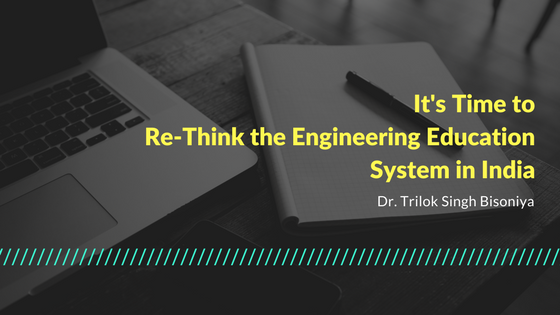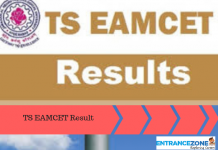Introduction: Youth find engineering an attractive career option since long back. Engineering and Technology sector offers excellent job openings in different domains like automobile, design, manufacturing, cloud technology and cybersecurity, infrastructure development, project management, robotics, renewable energy and many more. Globally there is huge demand of graduating engineers with skill sets and practical knowledge. Engineering graduates who have the right approach, aptitude and potential to have huge career opportunities in private, public as well as in government sector. They are also doing well in setting up their own ventures applying innovative and energetic minds. The central government schemes of Startup India, Digital India and Make in India are very supportive to be self-entrepreneur.
In last decade the number of engineering institutions and number of seats being offered there is increased exponentially. Since engineering is attractive career option, the majority of school pass outs want to take admission in engineering colleges. But the main problem is this that there is a shortage of qualified and experienced faculty members not only in private institutions and universities but in NITs and IITs also. Besides there are so many institutions where infrastructure is not state of art and laboratories are not even equipped with utmost required equipment.
The demand of time is to address the problem at the root level, redesign curriculum, enhance industry-institute interaction and focus more on practical and skill-based practices in order to improve the situation of engineering education system in India.
Problem Statement: The engineering institutions are facing critical condition in terms of admissions almost for last one decade. The institutions which are not having sufficient infrastructure, well-equipped laboratories and qualified faculty members are not in position to offer practical and quality education to students and at last pass outs of such intuitions are not able get a job and left unemployed. So, the students are showing more interest in joining other professional courses where they find better career growth and job opportunities. The trend of falling admissions is shown in the following table for the state of Madhya Pradesh. (Source: Directorate of Technical Education, Bhopal)
Subscribe to Get Updated Information about Re-Think the Engineering Education System in India
| Academic Session | Vacant Seats | Total Seats | % Vacancy |
| 2016-17 | 39532 | 78480 | 50 |
| 2015-16 | 43891 | 89903 | 48 |
| 2014-15 | 50961 | 98902 | 51 |
| 2013-14 | 42376 | 102075 | 41 |
This trend of steep fall in admissions is observed over pan India in almost all the states in past one decade.
Critical Analysis: It’s need of hour to do critical analysis of the problem. In opinion of author the prominent factors which are resulting in decreased interest of young aspirants and steep down fall in admissions in engineering institutions are:-
- Increase in number of institutions
In last decade the number of engineering institutions and number of seats being offered there are increased exponentially. Many of the private institutions are not having state of art infrastructure and laboratories. The students are deprived of practical exposure and learning which essential essence of engineering education.
The demand of situation is to focus on setting up technical institutions which fulfils at least minimum requirement of infrastructure, library, laboratories and other facilities as per guidelines of governing bodies and statuary organizations. In a country like India with population of more than 1.3 billion, the number of technical institutions required is really high but at the same time it is essential to ensure quality not only quantity.
- Lack of Quality in the Education
This is a real problem in engineering education system in India that the engineering which actually needs to be taught practically practiced theoretically. The curriculum which is being offered in majority of institutions and universities is more of theoretical in nature and students are not trained to apply this theoretical knowledge practically in industry. It needs to be revised keeping in mind the current industry requirement and latest technological trends and developments. There is requirement to enhance industry institute interaction in terms of trainings, internships, consultancy projects and invited expert lectures.
The private institutions, universities as well as premier institutions like NITs, IITs are not having sufficient number of qualified and experienced faculties and staff. The situations must be addressed on priority basis and the recruitment criterion and guidelines must be uniform and transparent. India has sufficient number talented brains but because of unsupportive system, lack of professional environment they prefer to deploy to other countries. The problem of brain drain shall have to be tackled in such a way to make this flow reverse.
- Steep Decline in Campus Recruitment
It is a general feedback from industry and employers that more than 75% engineering graduates in India are unemployable. The main reason is that they are lacking in required skill sets, aptitude, communication skills and approach.
The problem starts at school level itself. We shall have to focus on improving communication skills, logical approach and mathematical aptitude at school level. The need of hour is to upgrade education and training system in India.
The graduating engineers from majority of institutions in general don’t have practical knowledge and required skill sets for a sector specific job roles. Obviously, it is difficult for them get employed on specific job roles.
Actually the stuff which is being admitted in many of the engineering institutions is of poor quality. Even those who are not found suitable to seek admissions in non-technical programs easily get admissions in engineering institutions. The situation become worse as more than 30% students got admitted in engineering colleges do not versed with simple mathematical skills required in routine life for completing simple calculations, counting and data interpretation. They need to go through bridge courses before actually allowed to start studying engineering curriculum so that all students come at certain threshold level to take up technical courses.
The bridge courses must cover fundamental science concepts, mathematical calculations and data interpretation, reasoning and logical aptitude and above all communication skills.
It is because of aforesaid reasons engineering graduates are facing the problem of employability and dissatisfaction in existing jobs. The problem must be addressed at the root level and to be taken care of properly only then the employability rate will be increased and will decrease dissatisfaction in existing jobs and stress level of employees.
- Willingness to Experiment
The youth of today are willing to take up challenges and try different career options instead of choosing the conventional courses blindly. They have option of making career in many other professional courses like media & communication, architecture, law, hospitality and tourism, fashion designing, banking and finance etc.
There are so many career options available for them to choose other than engineering which is very technical in curriculum content and also 4 year degree program.
- Lack of Counseling
In the absence of proper orientation in the system, parents and their wards follow an inappropriate procedure while selecting their branch of study in the college. During counseling, we notice that the selection of a branch of study is based on the following:
(1) The most sought-after branch in counseling,
(2) The branch having good job opportunities as seen by the previous year placements,
(3) Parental pressure and
(4) Peer pressure.
This is not the right practice. The correct way will be to spend some time assessing one’s interest for a particular branch and check if it matches well with the aptitude one has and the chosen branch of study.
Conclusion: The ideal higher secondary system would orient the student towards evaluating their aptitude and choosing to pursue engineering streams. This would ensure that the chosen stream matches their aptitude. In the absence of proper orientation in the system, parents and their wards follow an inappropriate procedure while selecting their branch of study in the college. The correct way will be to spend some time assessing one’s interest for a particular branch and check if it matches well with the aptitude one has and the chosen branch of study. The programmes and their course content reflect lack of interaction among academic institutions and industries. In the process the curriculum quite often fails to meet the needs of the industries. Engineering graduates who have right approach, aptitude and potential do have huge career opportunities in private, public as well as in government sector. They are also doing well in setting up their own ventures applying innovative and energetic minds









